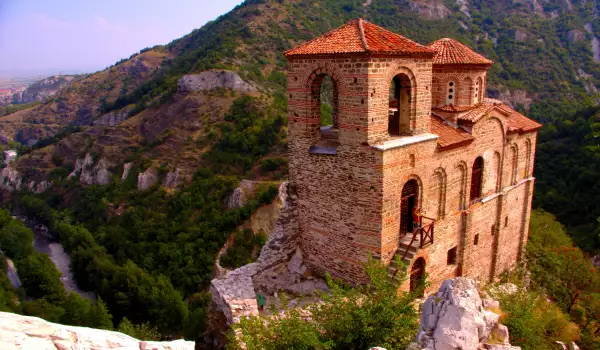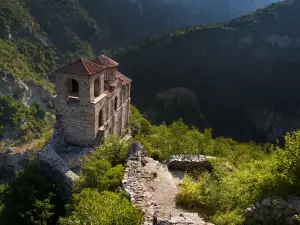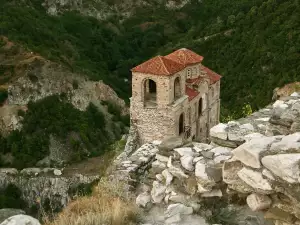Assen Fortress

The medieval fortress is situated 3 km south of Asenovgrad and is situated on a rocky peak above the left bank of the river scenery. The first written information about it can be found in the Statute of Bachkovo monastery, which is called, the stronghold of Petrich. The castle underwent some construction work, the most significant is that of the XIII century under King Ivan Assen II.
Discovered in the Bulgarian inscription over the entrance of the fortress the inscription gives reason to believe that Petrich fortress is called Assen's fortress.

The Assen's fortress was an unique architectural structure. Walls are constructed according to the relief of the rock massif and 2.9 m thick and preserved to a height of 3 m. There were also some inside the citadel (castle). The castle is situated on four terraces. The small spot on top of the peak, which the fortress was built on was built optimallywith everything being fine with remarkable architecture and thrift Pragmatism.
Until now, the archaeological excavations have clarified some key buildings in the citadel - a tower, water storage and a chapel and the only preserved building being the two storey single nave church of St. Mary of Petrich. It is a large two storey church and 18 meters long. It consists of a small narthex and naos (ship). The narthex is vaulted with a transverse arch and above it rises a quadrangular tower, a rare element in the church building at that time and in the walls have been found traces of frescoes.
After the fall of Bulgaria under the Ottoman rule, Assen's fortress was demolished. Restoration of the fortress started in 1934 and continues today. After completion of the overall restoration of the church in 1991 it started as an Orthodox church.

Excavations of the Assen's fortress continue forward, to reveal and explore the entire area, which includes how the fortress was.















